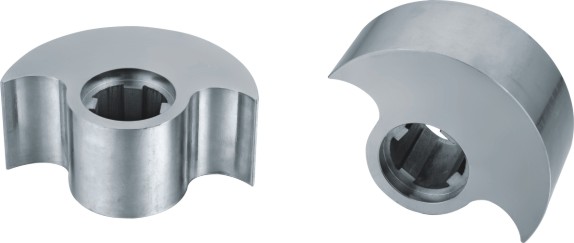
A Technical Guide to Progressive Cavity Pumps (PCPs)
As a critical equipment in fluid handling systems, Progressive Cavity Pumps (PCPs) — also referred to as progressing cavity pumps — are positive displacement devices characterized by their helical rotor-stator structure. This guide systematically elaborates on their working principles, classifications, technical comparisons, advantages, and industrial applications, providing professional reference for engineering selection and application.
1. Fundamental Definition of Progressive Cavity Pumps
A PCP is a positive displacement pump designed to transfer fluids with high precision, regardless of their viscosity (from low-viscosity liquids to high-viscosity pastes) or the presence of solid particles. Its core design features a single-helical rotor (typically an external screw structure) and a double-helical stator (a fixed component with a complementary internal shape to the rotor). When the rotor rotates within the stator, a series of sealed cavities are formed and move continuously along the axis, enabling stable fluid conveyance from the inlet to the outlet.

2. Operating Mechanism
The operation of PCPs relies on the progressive movement of sealed cavities driven by the rotor-stator interaction, following these key steps:
1. Cavity Initiation: As the rotor (connected to the drive shaft) starts rotating, the clearance between its helical surface and the stator’s inner helix forms initial low-pressure cavities at the inlet.
2. Fluid Entrapment: Due to pressure differentials, the pumped fluid is drawn into these cavities, which act as "conveying units" to isolate the fluid from the external environment.
3. Progressive Conveyance: With continuous rotation, the rotor’s helical structure pushes the cavities to move axially along the stator. This movement is uniform and non-pulsating, avoiding shear or turbulence in the fluid.
4. Pressure Build-Up & Discharge: As the cavities approach the outlet, the stator’s structural constraint compresses the fluid, generating stable pressure. Finally, the fluid is discharged through the outlet, maintaining a consistent flow rate proportional to the rotor’s rotational speed.
This mechanism ensures pulsation-free, low-shear, and controllable flow — a defining advantage that makes PCPs irreplaceable in handling sensitive or complex fluids.
3. Classification of Progressive Cavity Pumps
PCPs are categorized by application scenarios and structural modifications, with the following common types:
·Standard Type: Universal design for general industrial fluid transfer (e.g., chemical slurries, viscous oils).
·Sanitary/Food-Grade Type: Features smooth, easy-to-clean surfaces (compliant with 3A or FDA standards) for food, pharmaceuticals, and cosmetics (e.g., transferring yogurt, ointments).
·High-Pressure Type: Optimized rotor-stator materials (e.g., reinforced elastomers) to generate high discharge pressure (up to 40 bar), suitable for long-distance pipeline transportation.
·Submersible Type: Integrated with submersible motors for underwater operations (e.g., deep well dewatering, sludge extraction from ponds).
·Hazardous Area Type: Explosion-proof design (ATEX or IECEx certified) for flammable/explosive environments (e.g., oil and gas well sites).
·Hopper-Fed & Open Throat Type: Equipped with a hopper or enlarged inlet to handle high-viscosity materials with poor fluidity (e.g., dough, sludge cakes).
4. Technical Comparison: PCP vs. Centrifugal Pump
The following table contrasts core performance metrics to clarify their application boundaries:
Conclusion: PCPs excel in complex conditions (high viscosity, solids, sensitivity), while centrifugal pumps are preferred for low-viscosity, high-flow, and low-maintenance scenarios.
5. Core Advantages of PCPs
·Broad Fluid Compatibility: Handles viscous fluids (e.g., asphalt), shear-sensitive materials (e.g., blood, biopharmaceuticals), and solids-laden fluids (e.g., sewage sludge, ore slurries).
·Precise Flow Control: Flow rate is linearly related to rotational speed, enabling accurate metering (controllable within ±1% error).
·Self-Priming & Cavitation Resistance: Can self-prime (suction lift up to 8 meters) and operate under low NPSH conditions, suitable for suction from low-level tanks.
·Stable Pressure Output: Maintains constant pressure regardless of flow rate fluctuations, ideal for long-distance or high-resistance pipeline systems.
·Structural Flexibility: Customizable rotor/stator materials (e.g., nitrile rubber for oils, PTFE for corrosives) and configurations to meet specific industrial needs.
6. Typical Industrial Applications
PCPs are widely used in sectors requiring precise, gentle, and reliable fluid handling:
·Oil & Gas: Transfer of crude oil, drilling mud, and produced water; downhole PCPs for artificial lift in heavy oil wells.
·Food & Beverage: Conveying of fruit purees, chocolate, honey, and dairy products (sanitary design prevents contamination).
·Wastewater Treatment: Sludge thickening, dewatering, and polymer dosing (resistant to abrasive particles).
·Pharmaceuticals & Cosmetics: Transfer of creams, ointments, and vaccine solutions (low shear protects active ingredients).
·Mining: Transportation of mineral concentrates, tailings, and flotation reagents (abrasion-resistant materials extend service life).
·Papermaking: Dosing of sizing agents, pigments, and pulping chemicals (accurate metering ensures paper quality stability).
·Agriculture: Injection of fertilizers, pesticides, and animal waste (controllable flow avoids over/under-dosing).
7. Selection Recommendations
When selecting a PCP, focus on:
·Fluid properties (viscosity, solids content, corrosiveness, temperature).
·Operating conditions (flow rate, pressure, ambient environment).
·Material compatibility (rotor: stainless steel; stator: elastomers/PTFE based on fluid chemistry).
For high-abrasion scenarios (e.g., mining), choose hardened rotor materials (e.g., 17-4PH stainless steel); for food applications, prioritize sanitary certifications and crevice-free designs.
Progressive cavity pumps, with their unique rotor-stator mechanism, bridge the gap in handling challenging fluids that traditional pumps cannot address. Their technical advantages make them a cornerstone of modern fluid handling systems, particularly in industries demanding precision, reliability, and adaptability.
Conclusion
At HL Parts, we specialize in providing top-quality pump rotors that are designed to meet your specific needs and help you stay ahead in a competitive market. Upload your file and let’s get started!
















